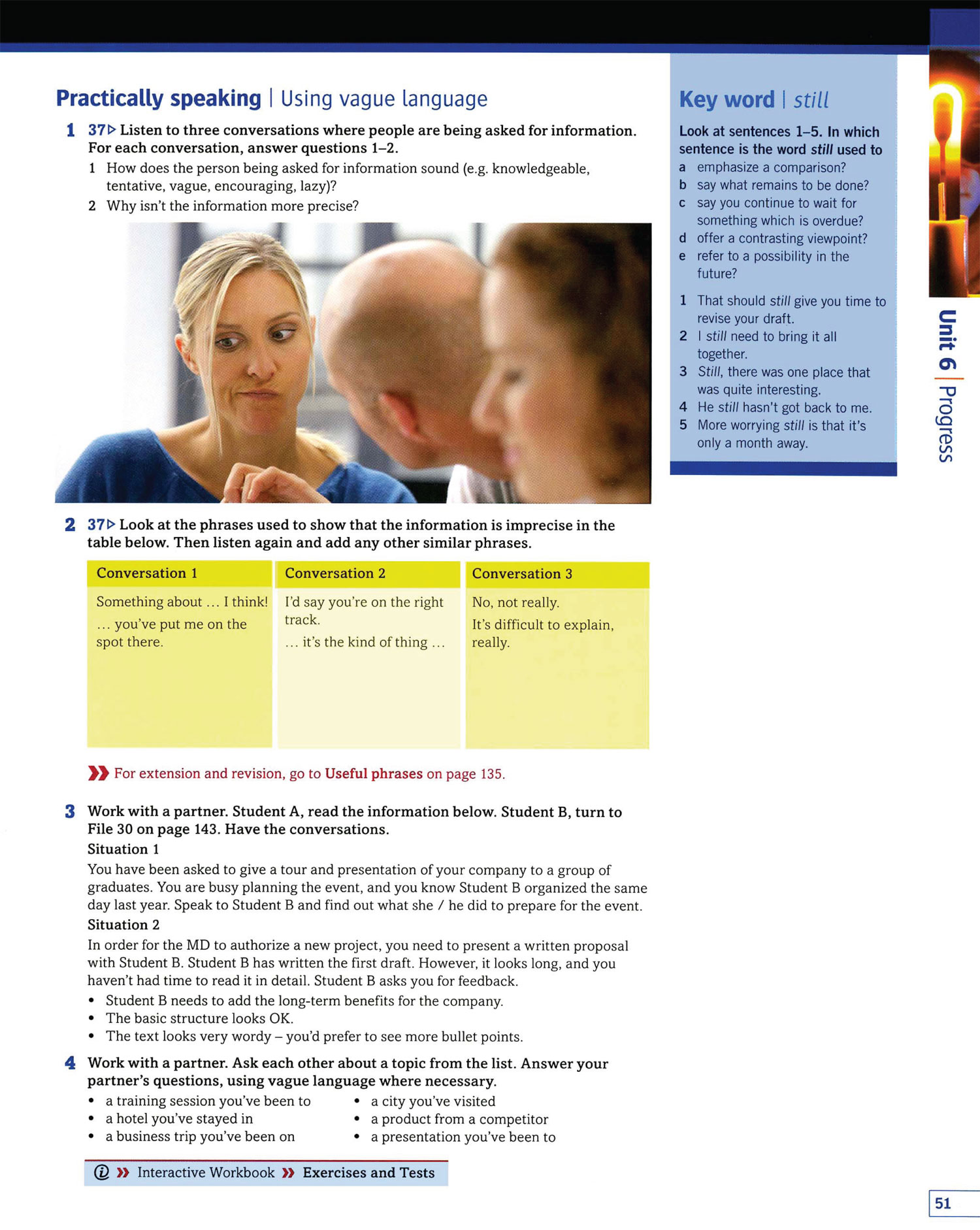
This is a sample lesson from our advanced business course. This book is suitable for the following levels:
| TOEIC | TOEFL | IELTS |
|---|---|---|
| 800+ | 90+ | 7.0+ |
The book covers all main language skills and general business English. More information is available on the advanced business course page.
Introduction
This lesson will focus on using vague language. It is from the section in the book on explaining progress. This is very useful in everyday business situations.
Warm Up
What kind of vague language can you think of? When might you want to use vague language?
Practice
Now let's practice what we learned in number 2. Read the instructions for number 4 and then practice with your teacher.
